Process
Designing and Handcrafting a Patented, Ergonomic Rocking Chair
1.
Engineering is Prepared for Crafting
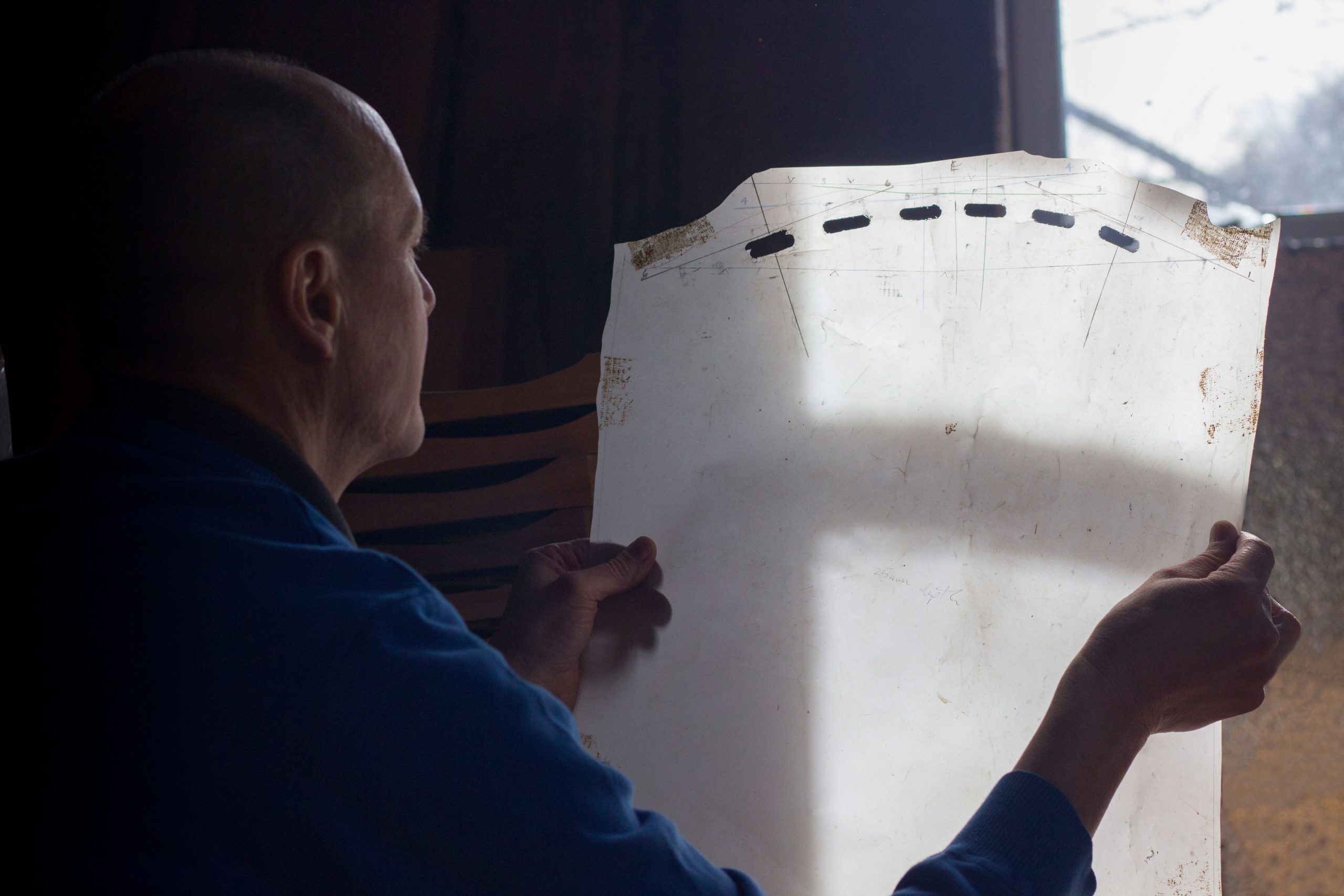
After performing the required research, engineering drawings and application documents were completed for the US Patent Office. The patent for Bob’s state of the art design was based on a cantilever seated rocking chair with a flexible back structure. The flexibility and position of the slats, the position of the lumbar ‘tangency point’ on the back, and the design of the back structure offers therapeutic comfort. After two major back surgeries, Bob had a strong desire to research, create and handcraft an ergonomic rocking chair.
2.
Routing Parts Utilizing Jigs & Fixtures
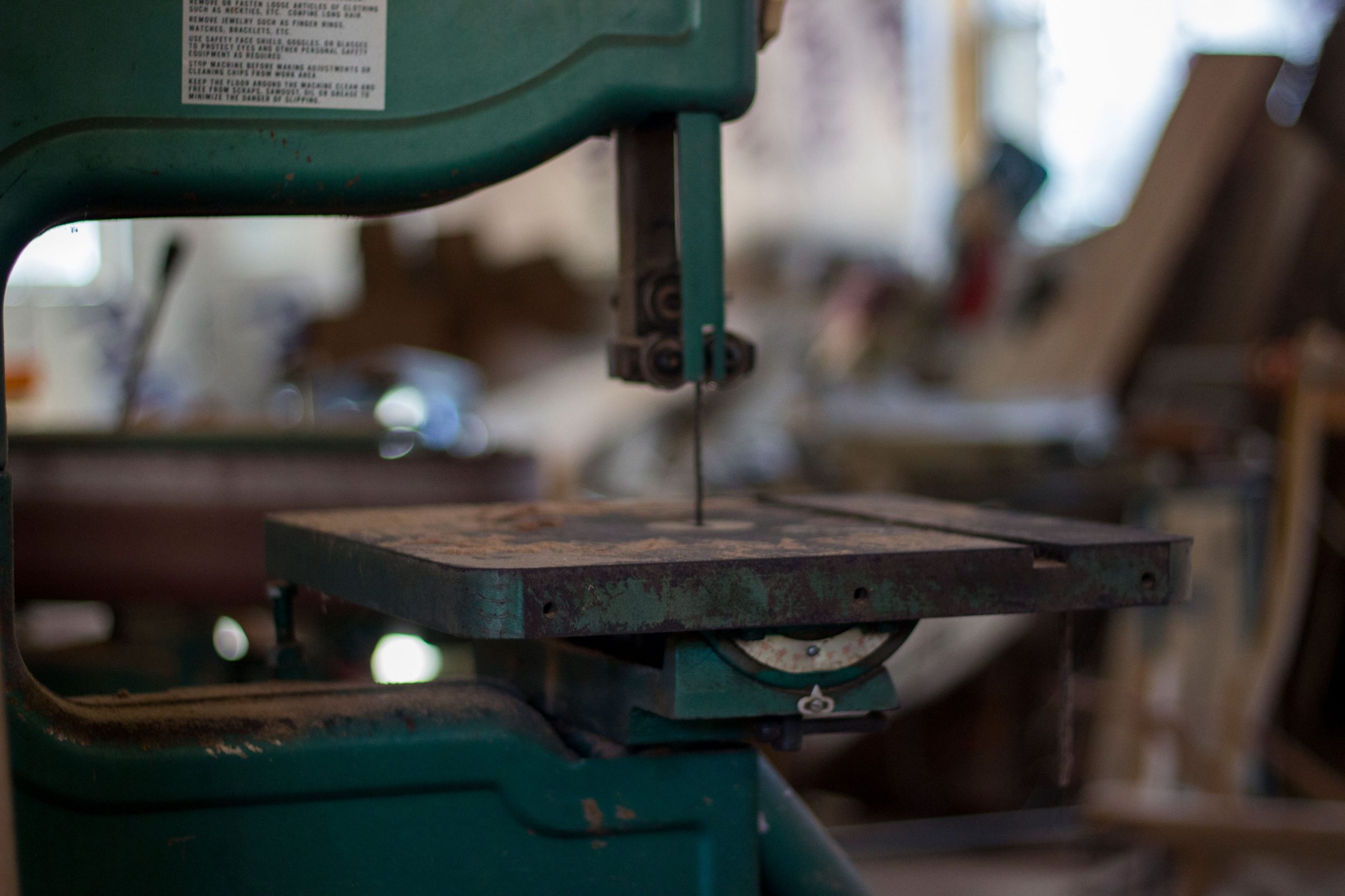
Once the kiln dried hardwood lumber is jointed and planed, the parts for the rocking chair are routed to size with jigs and fixtures. Numerous additional jigs and fixtures are utilized to precisely locate and machine the complex lap joints and mortise tenon joints. Bob designed and fabricated all the jigs and fixtures utilized in the processing of this patented rocking chair. During the ordering process with the customer, Bob custom fits rocking chairs to optimize fit, comfort and customer satisfaction. Bob’s rocking chair is handcrafted from several different species and combinations of wood. His rocker is offered primarily in cherry, walnut, maple, red oak and ash.
3.
Steam Bent Back Slats are Cut & Shaped
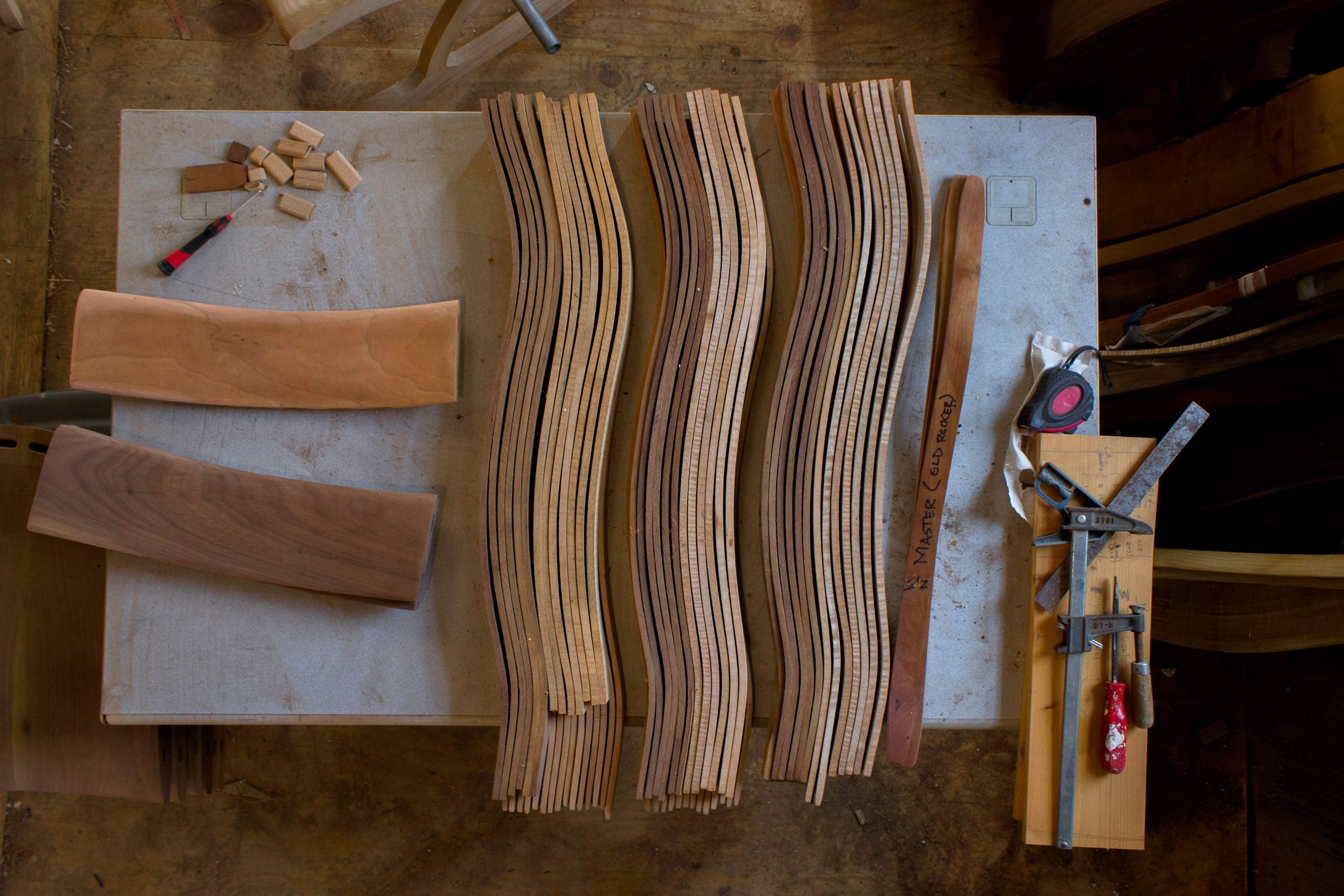
Lumbar slats are cut to length, and shaped for proper fit into the header and the seat. Slats are then final sanded and multiple coats of finish applied. As a part of the design and patent process, the steam bent lumbar slats were designed and tested to withstand the desired flexibility and optimal strength.
4.
Side Frames are Cut, Hand Fitted & Glued
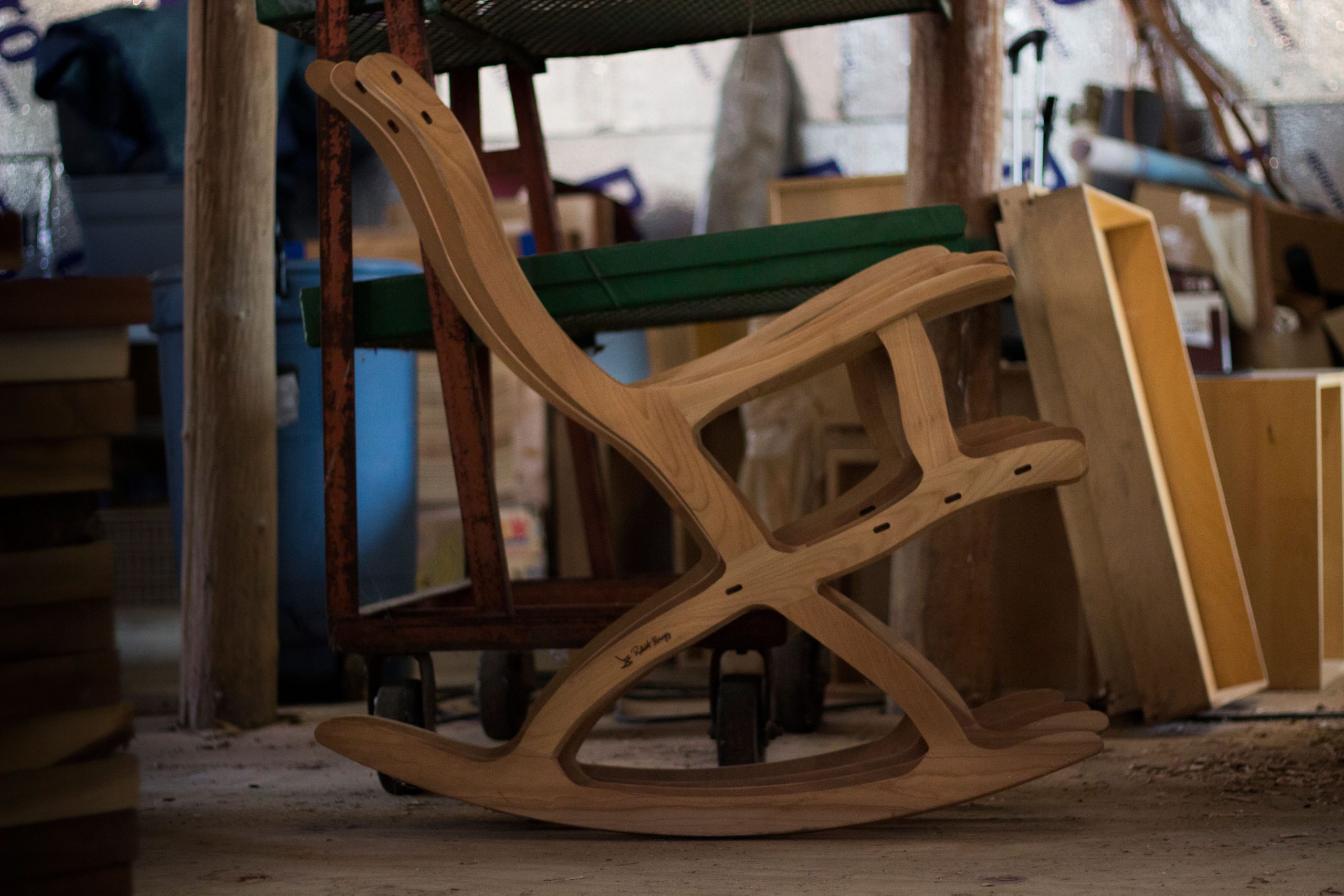
Prior to the final sub-assembly of the rocking chair, all the parts and joints are pre-fit and hand chiseled for optimal fit, bond strength and structural joint integrity. Side frame parts are loaded into fixtures to clamp-up and bond the complex frame(s). Sub-assemblies, including side frames of the rocking chair are sanded and mortised for the integration of the arms. Fixtures are used to machine the mortises for the arm tenons and to bond the arm to the frame. The side frames are sanded with the bonded arms.
5.
Back Slats, Seat & Headers are Assembled to the Frame
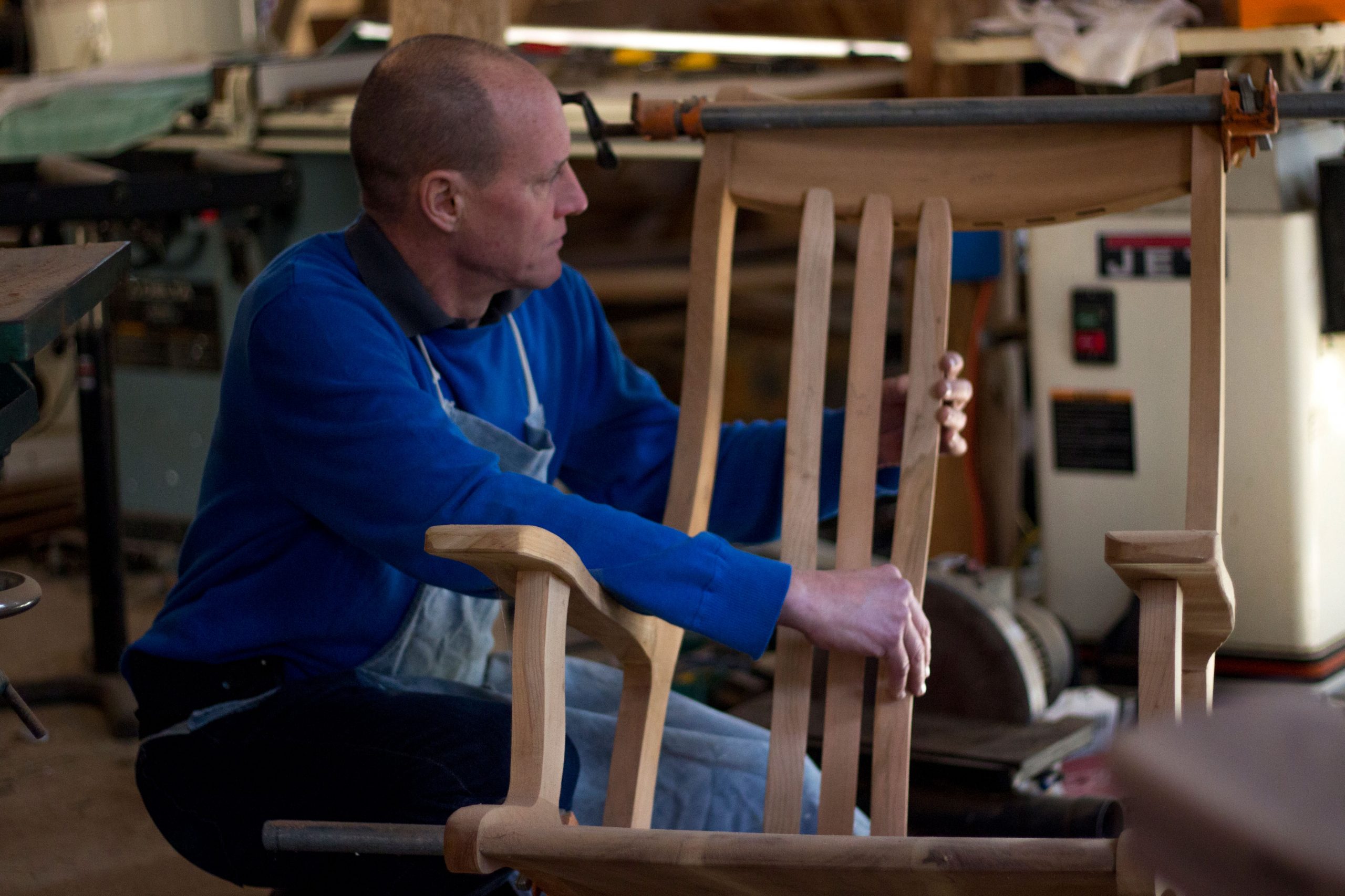
The side frames, seat, and lumbar slats are carefully pre-fit to assure proper fit and joint integrity. Once the pre-fit is validated, the chair is disassembled and ready for final bonding. The rocking chair components are bonded together utilizing a final assembly fixture. Bob designed and fabricated this fixture to apply the necessary clamping force in the right locations for adequate bonding.
6.
Ergonomic Rocking Chair is Complete
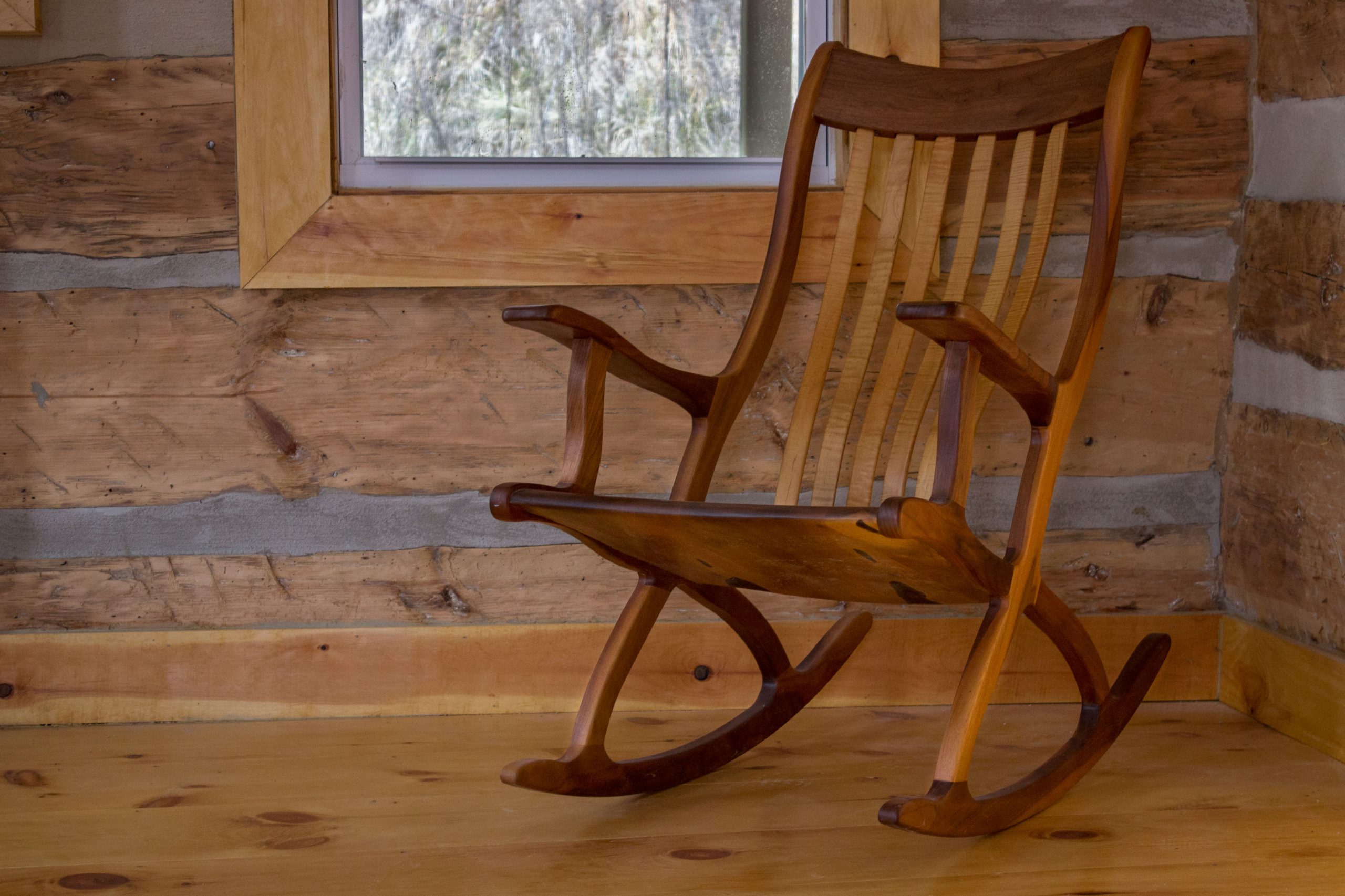
The piece is sanded with 120 grit and then progressively to 320 grit in order to prepare for the finish application process. All contours are hand blended to optimize the finish, aesthetic appeal and to emphasize the lines, shape and grain of the hardwood chair. Four coats of oil finish are applied. After each coat of finish, all surfaces are hand sanded with the next higher grit 400, 600 and 800 respectively. After the final coat of finish, the piece is hand sanded with wet/dry 1000 grit paper and hand polished. This laborious process provides a very durable, satin and hand-rubbed finish. Upon completion, Bob signs and dates each chair so that it becomes a work of art for your home. Bob’s rocking chair is one that can be enjoyed today and for generations to come.
